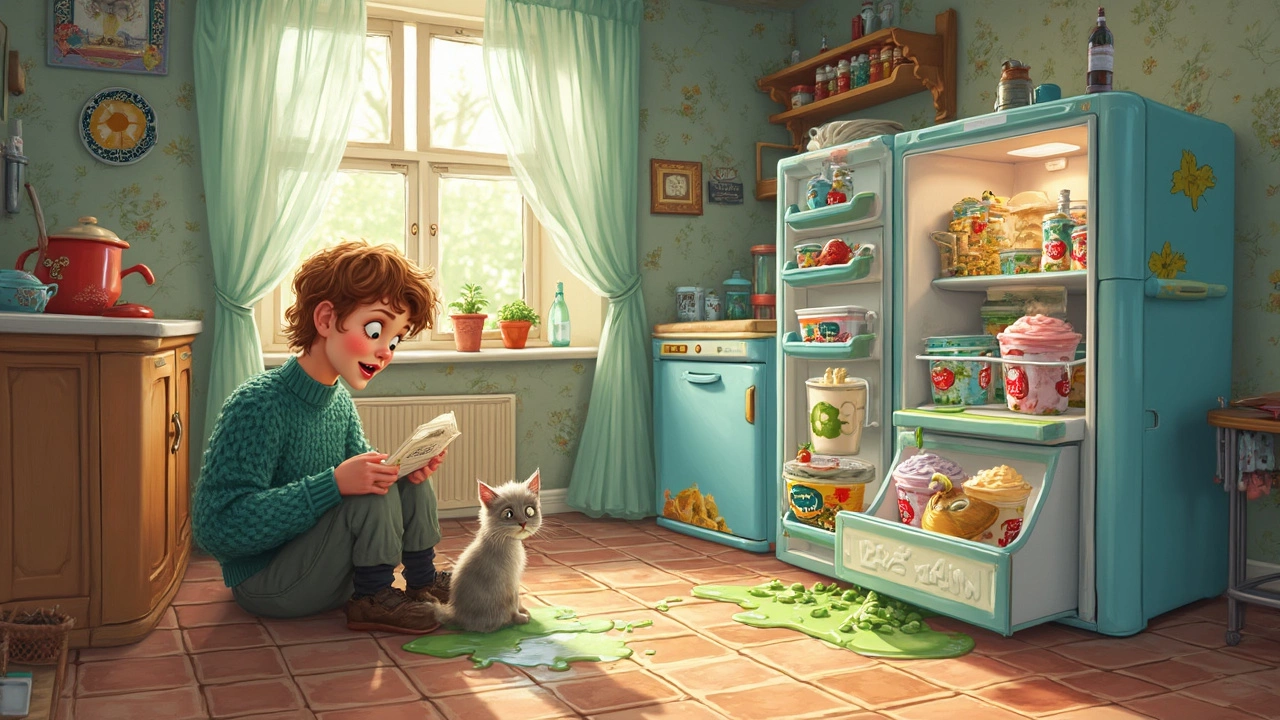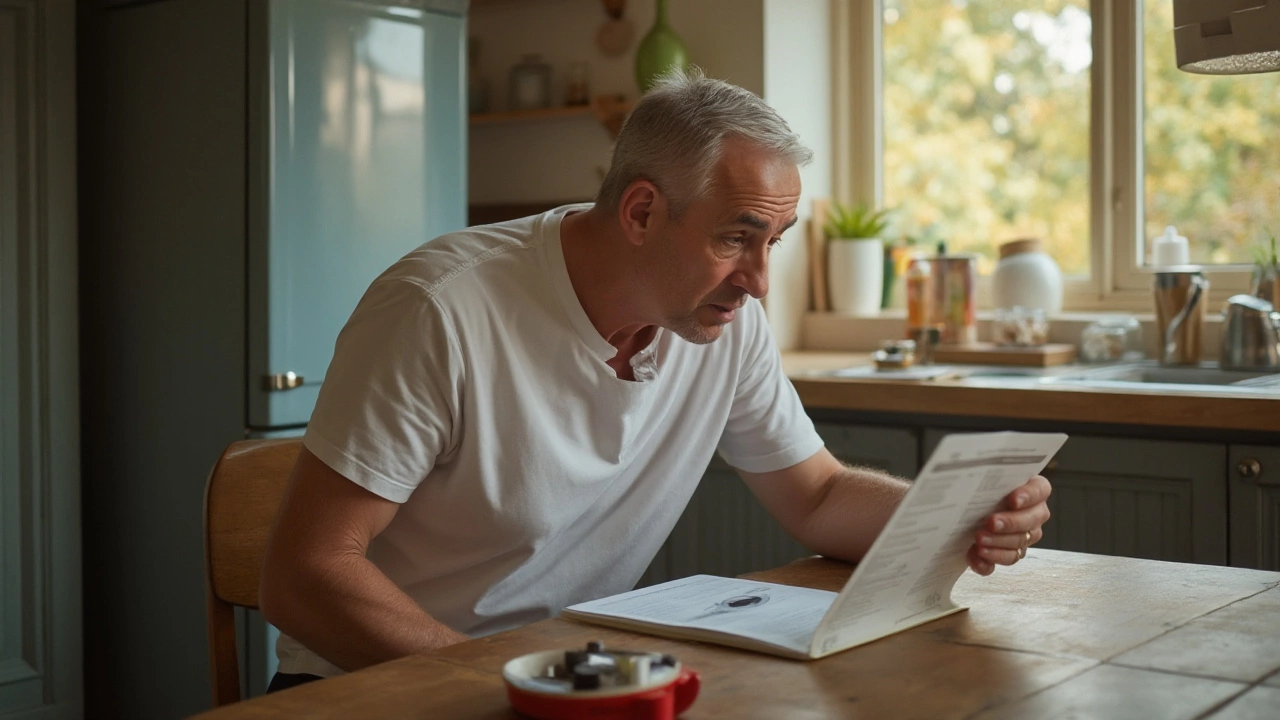
- 10 Nov 2024
- Gideon Thornton
- 0
A freezer that suddenly stops cooling can be a cause of concern, especially if it’s stocked up with perishable goods. But before you rush to replace it, it's worth knowing that many non-cooling issues can be fixed easily at home. This guide aims to help you diagnose and potentially fix the problem without needing to be an appliance expert.
Start by identifying the specific symptoms you're experiencing. Is the motor running but not cooling, or has it completely shut down? This distinction can point you in the right direction. Sometimes, minor issues like door seals can prevent the freezer from maintaining the right temperature, leading to bigger problems down the road if not addressed promptly. Knowing the common culprits can prevent you from jumping to expensive conclusions.
Throughout this article, we’ll explore practical solutions that can save you time and money, and help keep your food safe. And should your attempts prove unsuccessful, you’ll also know when it's time to call in a professional for assistance.
Identifying the Problem
Understanding why your freezer has stopped cooling is the first and most essential step in troubleshooting. Many household appliances, including freezers, can encounter issues that are easier to solve if you correctly identify the underlying problem. Start by observing the freezer's behavior. Is the internal light on when you open the door? Do you hear a humming noise, indicating that the motor is running? Making notes of these observations is crucial, as they can provide clues about what might be malfunctioning.
If your freezer is getting power but not cooling, it's often related to components like the thermostat, compressor, or evaporator fan. The thermostat regulates the temperature inside the freezer, ensuring it doesn’t drop below or rise above set levels. Checking the thermostat setting might seem obvious, but it's a leading cause when freezer repairs are needed. Slightly turning the dial can sometimes reactivate cooling if it’s been bumped or turned off by accident. A common issue occurs when the evaporator coils, located behind an internal panel, freeze over. These coils remove heat from inside the freezer, and ice buildup can prevent them from doing their job. Manual defrosting might be required to resolve this.
Another factor to consider is the condenser coils. Often located behind or beneath the freezer, these coils can gather dust and debris over time. Blocked condenser coils make it difficult for the unit to release heat, directly impacting its cooling efficiency. Cleaning them might seem trivial, yet it’s one of the easiest fixes that yield significant improvements in performance. Keep in mind, it’s important to unplug the appliance before attempting any cleaning or repair work.
"It is often something simple that you can rectify yourself without the need for professional assistance," notes Anne Fritz, a home expert at the Home Repair Institute. Taking a few minutes to consider what might be wrong can make the solution evident, saving both time and unnecessary expenditure.
For those who enjoy data, it’s interesting to note that according to the U.S. Department of Energy, fixing a freezer's condenser coil can improve its efficiency by up to 30%. Older units, especially those with mechanical controls, are likely to experience these types of failures as components age. Recognizing these common problems and their signals puts you in a better position to tackle appliance troubleshooting head-on.
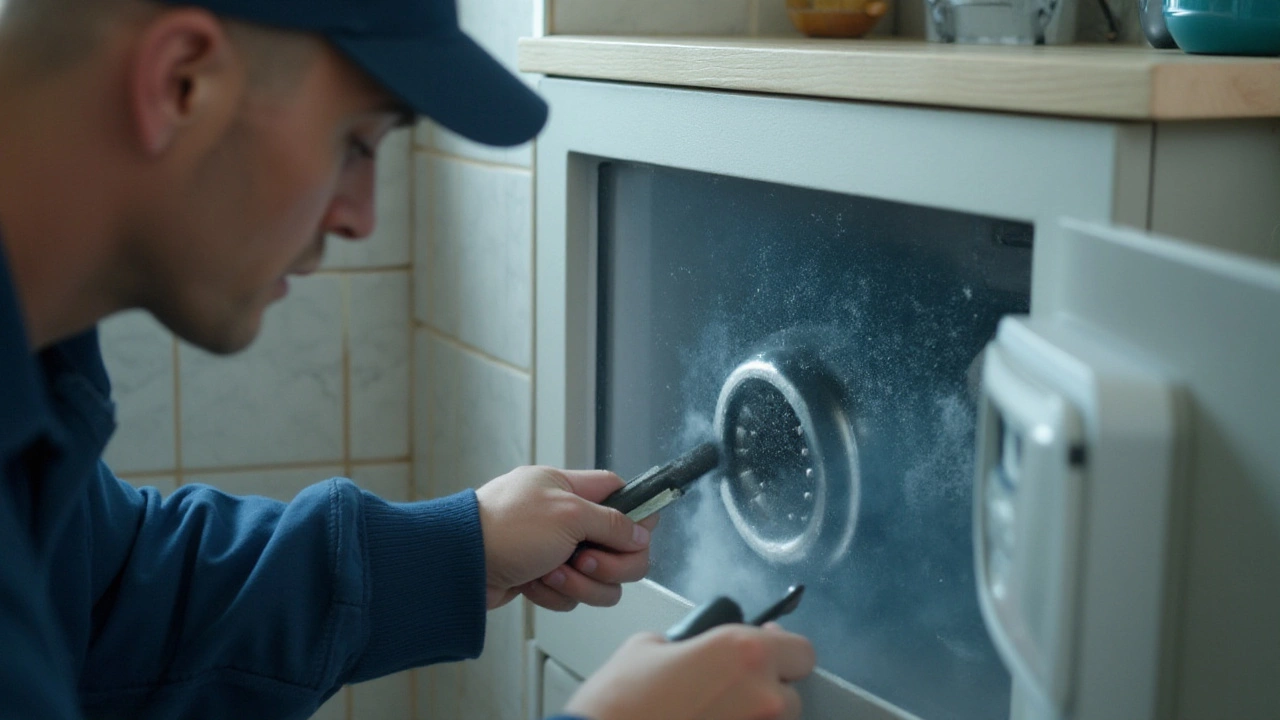
Checking the Basics
Before diving into complex troubleshooting, it's crucial to tackle the fundamentals. Begin by ensuring your freezer is plugged in properly and whether it's receiving power. A loose plug can often be overlooked but could very well be the reason your freezer isn't performing. Also, check if the circuit breaker for the outlet is tripped, as this could cut off power to your appliance unexpectedly.
Once you've confirmed the power supply, take a look at the temperature settings. Sometimes, these may be accidentally changed or reset. Verify that the temperature is set to the recommended level, usually around 0°F (-18°C) for freezers. Surprisingly, these settings can often be disturbed during routine cleaning or when loading groceries. It's astounding how a simple slip of the finger while adjusting the controls can impact its operation.
Check the freezer's placement as well. Is it too close to the wall or other appliances? Many users are unaware, but there needs to be ample space around your freezer for the heat to escape. If there isn't sufficient spacing, your freezer might struggle to maintain temperature, as proper air circulation is integral to its cooling process. Keep an eye on the surroundings, ensuring there's at least a few inches gap from other surfaces.
"Ensuring proper air circulation can significantly enhance freezer performance," says home appliance expert Sarah Thompson from Appliance Wizards Magazine.
Another basic check revolves around the door seal. Though it may seem trivial, a compromised door seal can allow warm air in, leading to efficiency problems. Run your hand around the door’s perimeter to feel for cold air escaping. Alternatively, if you're not keen on feeling around, try the dollar bill test. Close the freezer door on a bill. If you can easily pull it out, it's time to replace your seals. Proper door integrity ensures the cold environment stays stable.
| Basic Checks | Importance |
|---|---|
| Plug and Power Supply | Ensures the freezer is receiving power |
| Temperature Settings | Prevents accidental misconfiguration |
| Placement | Allows for necessary air circulation |
| Door Seal | Maintains interior environment integrity |
Understanding these basic checks can often solve many non-cooling issues right from the start. Addressing these fundamental areas helps in identifying more pervasive problems later on, should they exist. It's fascinating how many issues turn out to be fixable with such simple solutions.
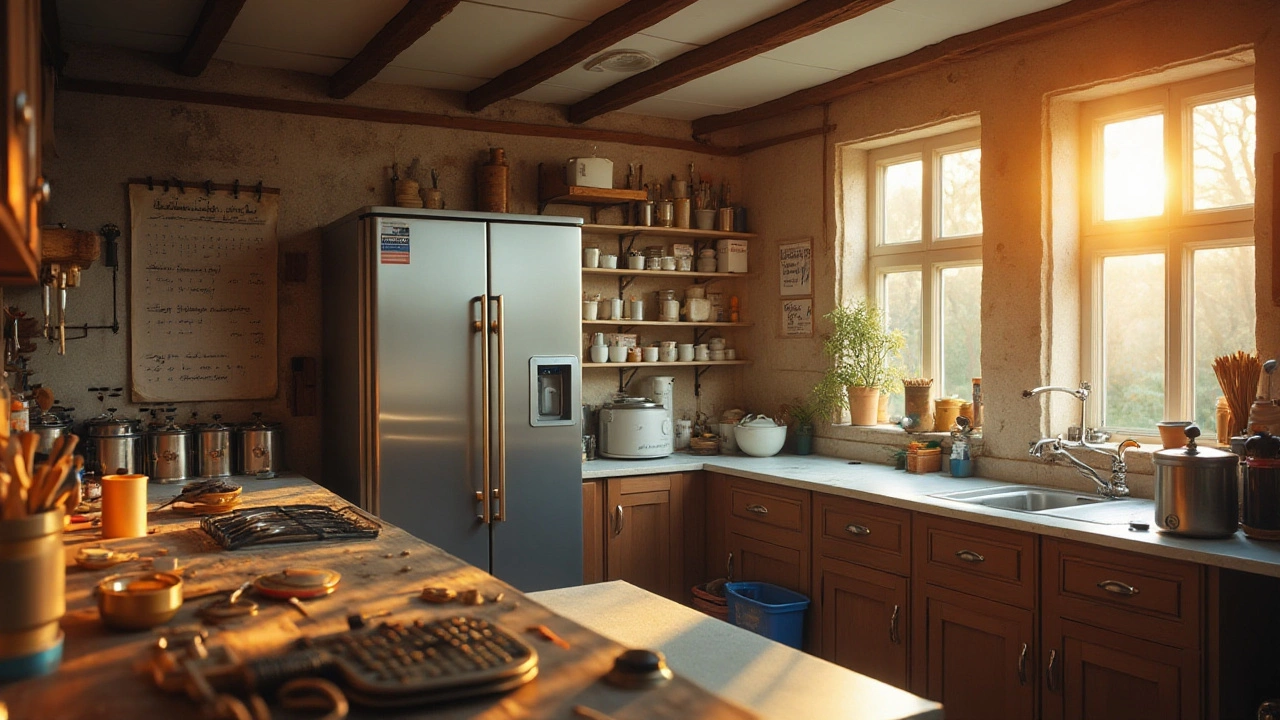
Common Issues and Fixes
When your freezer isn’t cooling, there are several potential culprits worth investigating. The first area to consider is airflow. Freezers operate by circulating cold air, and any obstruction can compromise their ability to maintain the desired temperature. Check if something inside is blocking the air vents, as even a small item can restrict airflow. It's also possible that dust or other debris could be clogging the air channels or the intake area, reducing efficiency. Keeping the freezer organized with adequate space for airflow is vital for optimal performance.
Another common issue involves the condenser coils, which can accumulate dirt and dust over time, impairing the freezer's cooling capabilities. These coils are usually located at the back or beneath the unit. Cleaning them periodically can make a significant difference. To clean them, unplug the freezer and gently vacuum the coils or use a brush to remove dirt. Be careful not to damage the coils in the process. This simple step can often restore the unit’s cooling efficiency.
One often overlooked aspect is the door seal, or gasket. If the seal is not tight, warm air can seep into the freezer, causing it to work overtime to keep things cold. You can test the seal by closing the door on a thin piece of paper; if you can pull it out easily, it may be time to replace the seal. Ensuring that the doors are sealing properly keeps the cold air in and prevents extra wear on the freezer motor, prolonging the life of the appliance.
Motor and Fan Issues
If those fixes don’t solve the problem, listen closely to the motor. The evaporator fan motor, responsible for circulating air within the freezer, could be malfunctioning if the fan blades aren’t turning freely. If the motor is squeaking or seems strained, it might need replacing. “A simple fan replacement can sometimes be a quick fix,” says James Sheffield, an appliance repair expert. Make sure the motor turns freely and isn’t obstructed by ice or other components, as this can lead to an easy repair.
An unexpected but interesting fact is that sometimes the ambient temperature can impact your freezer. If the unit is located in a very cold room (below the manufacturer’s suggested minimum temperature), it might not cycle on often enough to keep the freezer cool. This is a factor to consider if you have your freezer in a garage or an unfinished basement, particularly in winter months.
Lastly, control boards and thermostats are electronic components that might be worth investigating. These parts regulate temperature and can malfunction or fail over time. If you're handy with tools, you may try testing them yourself, but many people find it best to call in a professional at this point.
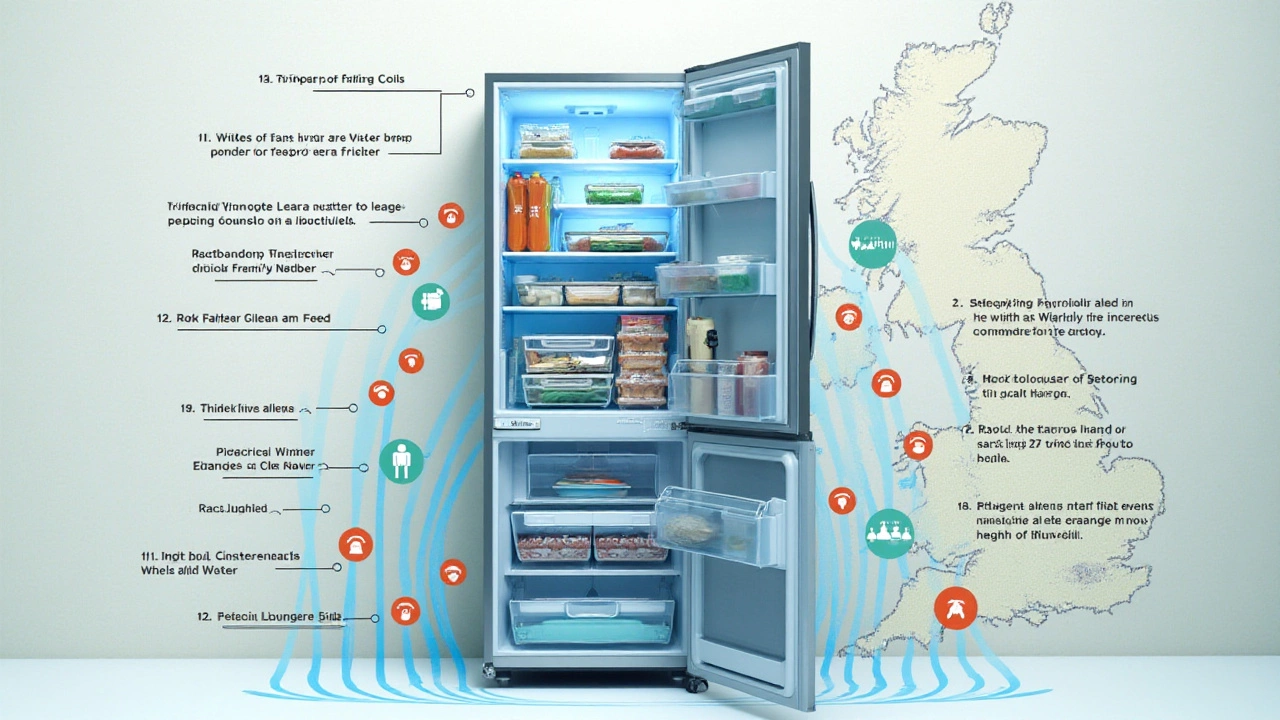
When to Call a Professional
Sometimes, despite our best DIY efforts, a freezer repair becomes too complicated or dangerous to attempt on your own. Recognizing when to step back and call a professional can save both time and the potential for bigger problems. If your freezer is making strange noises or if the back of the appliance is hot to the touch, these could be signs of a failing compressor, an issue that requires expertise to fix safely. Attempting to fix such components on your own could void warranties or cause injury due to high voltage and pressurized refrigerants.
One of the telltale signs that professional help is needed is when you notice a persistent foul odor that doesn't go away even after a thorough cleaning. This could indicate mold or mildew within areas of your freezer that are not easily accessible, demanding professional cleaning or part replacement. Another red flag is a significant water leak from your freezer, which could point to issues with the defrost drain or related plumbing. This not only causes potential damage to floors but also represents electrical hazards. Certified technicians can identify these hidden problems and offer safe, effective solutions.
Advanced issues like an unresponsive control board or faulty temperature sensors usually require specialist tools and knowledge for diagnosis and repair. Many modern appliances have digital components that are not user-serviceable, and tampering with these unnecessarily can sometimes lead to more costly repairs or replacements.
According to the U.S. Department of Energy, freezers on average consume 2000 kWh annually. Maintenance by professionals helps cut down inefficiencies that might spike this consumption, climbing up utility bills unnecessarily.It's also worth noting that many home insurance policies have stipulations about who is qualified to perform repairs on high-value kitchen appliances, adding another layer of importance to seeking proper help.
If you're unsure about the severity of the problem, seeking a professional evaluation could provide peace of mind. This approach is often recommended for freezers that are less than five years old or still under warranty. Most manufacturers prefer that certified technicians perform any technical repairs to ensure the appliance is treated correctly and to retain warranty protections. Reputable repair services offer diagnostics and quotes before proceeding with repairs, giving you a clear view of what needs to be done and how much it will cost. This transparency is invaluable in making informed decisions regarding appliance repair and maintenance.
Ultimately, knowing when to call a professional can make the difference between a minor repair and needing a full replacement. It's all about recognizing the limitations of DIY fixes and valuing safety and long-term functionality of high-investment kitchen appliances. By taking the right steps at the right time, you protect your home and ensure the consistent performance of your appliances for years to come.


